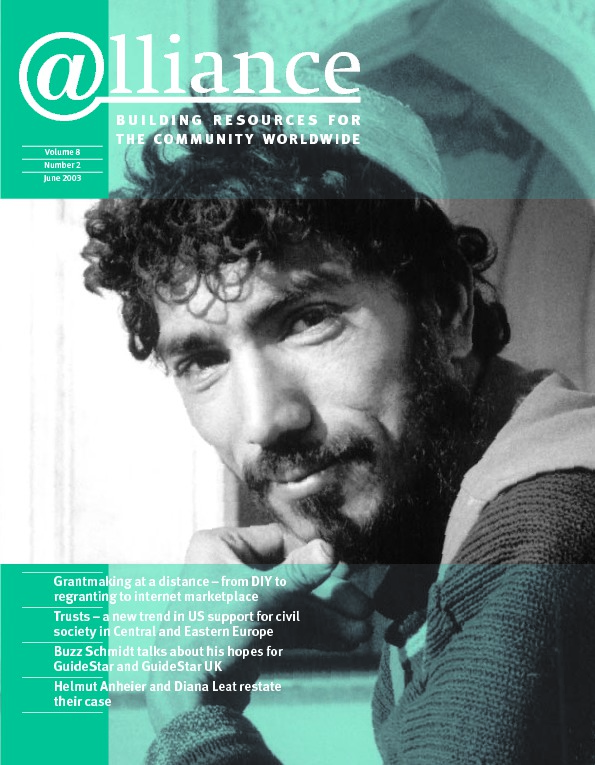In recent years, Fair Trade has emerged as a powerful symbol of the trade justice movement. Engaging consumers and activists alike, it appears to offer a new model of production and distribution that is both scalable and has real impact. Yet, though it is growing rapidly, it accounts for only a tiny fraction of 1 per cent of all current world trade. Its real significance in terms of addressing global trade injustice, however, is the way it links consumers and activists.
Fair Trade represents a unique, market-driven response to trade inefficiencies and inequalities that result in endemic poverty for many farmers and artisans globally. Into the equation of consumer choice, Fair Trade has introduced a holistic view of the supply chain – specifically by reconnecting producer and consumer interests. It has thus made trade justice an important consideration for many customers and, by extension, significantly raised its profile with business and government.
How it works
Fair Trade operates on two distinct but connected levels. First, it helps alleviate producer poverty through fair pricing and an additional community development premium. It practically addresses some of the causes of global trade injustice through some of its characteristic methods, such as:
- direct purchasing from producers;
- transparent and long-term trading partnerships;
- establishing producer cooperatives;
- agreed minimum prices to cover the costs of production, usually set above market minimums;
- a focus on development and technical assistance via the payment to suppliers of an agreed Social Premium (often 10 per cent or more of the cost price of goods);
- provision of market information;
- sustainable and environmentally responsible production.
Second, Fair Trade is a social movement driven by activists that advocates systemic change to international trade rules to level the global playing field, currently biased against poor producers, and to make international markets function better. The important role of Fair Trade in the current Make Poverty History campaign clearly demonstrates this.
Consumers: voting with their wallets
Crucially, consumers like it. Sales of Fair Trade products in Europe, North America and Japan have grown exponentially in recent years, up to £500 million in 2003 from an estimated £335 million in 2002. Last year, the UK Fair Trade market – the largest in the world – was worth about £130 million. The US market, initially small, is now growing rapidly. If US market development follows the pattern of European markets – and there is evidence to suggest that it may be moving even faster – global Fair Trade sales will increase by a factor of 10-15 in the next few years. It is far from fanciful to assume, therefore, that global Fair Trade sales will top £1 billion by 2007.
This extraordinary consumer response to Fair Trade means that it is not only an activist movement but also a market-driven phenomenon. The consumer engagement with Fair Trade underlines its legitimacy, widens its impact, raises awareness of trade justice issues more generally, and helps put supply chain and trade issues at the heart of corporate and policy-level discussions. In this way, Fair Trade punches significantly above its weight. It not only provides vital extra cash now to producers suffering below-subsistence incomes but also challenges the wider issues of trade inequity such as the trade barriers on processed goods from developing countries – a pernicious policy that largely denies the poorest countries the chance to benefit from adding significant value to their products.
The mobilization of consumers as activists is Fair Trade’s biggest achievement to date. In many ways it has created a whole new market segment. It is this combination of campaigning and commercial success that will allow it to make a genuine and sustainable contribution to improving the terms of trade globally for the world’s most vulnerable producers. While the commercial market for Fair Trade may still be small, it is growing fast. And the impact of its underlying principles is already far greater. In this way, Fair Trade is a standard bearer for genuine reform in global trade.
Dr Alex Nicholls is a lecturer in Social Entrepreneurship at the Skoll Centre for Social Entrepreneurship at the Saïd Business School, University of Oxford, UK. He can be contacted at Alex.Nicholls@said-business-school.oxford.ac.uk
Fair Trade: Market-driven ethical consumption
Alex Nicholls & Charlotte Opal SAGE Publications £21.99
IBSN 1412901057
A timely look at the strategic future for Fair Trade at a crucial moment in its evolution from an alternative trading mechanism to a mainstream economic model. Each chapter tackles a key area of Fair Trade thinking and theory, and the political, legal and economic context of Fair Trade is given careful scrutiny. Difficult questions are tackled, such as ‘What is the role and value of corporate social responsibility?’ and ‘What is the brand meaning of Fair Trade?’ Case studies and concise histories of different Fair Trade organizations throughout.
To order, visit http://www.sagepub.co.uk






Comments (0)